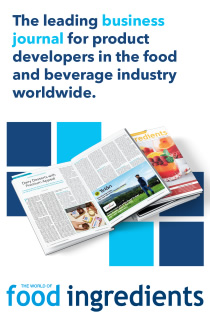Dairy protein ingredients: Market trends in Europe
Explore how dairy-based protein ingredients trends are evolving in Europe

In Europe, dairy-based protein ingredients are preferred for their high-quality protein and superior taste and texture. They support muscle recovery and satiety, making them ideal for functional food and beverages, snacks, and meal replacements. Innova Market Insights’ Insights360 research highlights key trends shaping the protein market for dairy-based protein ingredients. The global market researcher analyzes the top four protein ingredient categories, and reveals innovation opportunities that may develop in the future.
Product launch trends
European food and beverage launches with dairy protein ingredients slightly rose over the past five years. The number of food launches with dairy-based protein ingredients has increased, but their share of total protein product launches has slowed amid a rise in plant-based protein ingredients.
Most food launches with dairy-based protein are within the sports nutrition, desserts and ice cream, dairy, and bakery product markets. Despite changing trends, dairy protein remains a key ingredient in indulgent and performance-focused foods.
Dairy protein ingredients and claims
Innovation in dairy protein ingredients focuses on texture enhancement and improved protein absorption, making them essential for food categories that balance enjoyment and health benefits. While dairy protein use remains stable across most categories, the desserts and ice cream category is experiencing particular growth.
Milk protein ingredients are the most prevalent dairy-based protein, while whey protein has gained prominence. Whey, a fast-digesting protein from cheese or yogurt production, contrasts with milk protein, which combines slow- and fast-digesting proteins. This balance makes milk protein ideal for indulgent foods like desserts, baked goods, and cheese-based meals.  Dairy protein innovation focuses on texture enhancement and protein absorption.
Dairy protein innovation focuses on texture enhancement and protein absorption.
Growing environmental concerns drive ethical claims in dairy-based protein products. There has been a general rise in “vegetarian,” “no added sugar,” “low-fat,” and “lactose-free” claims in the protein market. Labels and claims often focus on sourcing and supply chain information.
Scientific advancements in non-animal dairy protein continue to offer sustainable alternatives that meet consumer demand for animal-free options without compromising benefits.
Sports nutrition trends
Four in ten sports nutrition product launches contain dairy-based protein ingredients, which has steadily grown over the past three years. Sports protein-based RTD is the top subcategory for launches with dairy-based protein ingredients in the past year. Sports bars, sports powders, and other sports nutrition formats follow this subcategory. There has been an increase in dairy-based sports powder launches.
Ethical and “free-from” claims in sports nutrition launches are rising. “No added sugar” claims show the most growth. “Low-fat,” “lactose-free,” and “sugar-free” options are also expanding, reflecting demand for cleaner labels and healthier choices. Whey protein isolate and concentrate dominate in the top sports nutrition subcategories.
Milk protein is more prevalent in sports bars and protein drinks. Environmentally sustainable ingredients and packaging further strengthen consumer appeal.
Desserts and ice cream trends
In the past five years, there has been a 13% CAGR rise in dessert and ice cream launches featuring dairy-based protein ingredients. The protein market is seeing growth in launches featuring dairy-based protein ingredients in dairy-based ice cream, frozen yogurt, chilled desserts, and frozen desserts.
Ethical environment and human claims have also significantly grown in launches with dairy-based protein. “No added sugar” claims have propelled “free-from” claims growth, catering to a growing consumer demand for less sugar and more protein. “High protein” and “lactose-free” claims are also increasing. Milk ingredients are the most prevalent in dairy-based protein products.
Milk ingredients are the most prevalent in dairy-based protein products.
While milk protein prevails in the top two subcategories, the use of whey protein concentrates has increased, particularly in dairy-based ice cream and frozen yogurts.
Dairy trends
Dairy launches using dairy-based protein ingredients have increased by a 7% CAGR over the past five years, matching the growth of total dairy launches during the same period. Flavored milk with dairy-based protein shows the highest growth as a percentage of all flavored milk launches. Cheese, soft cheese desserts, and drinking yogurt with dairy-based protein ingredients are also expanding within their subcategories.
“High-protein” and “no added sugar” claims lead market growth, while vegetarian and ethical claims increasingly gain attention. Milk protein is predominant in most launches, but plant-based protein ingredients have also increased over the past five years, reflecting shifting consumer preferences.
Bakery trends
Bakery product launches with dairy protein ingredients show a fluctuating trend that rebounded in the past year. Cakes, pastries, and sweet goods is the leading subcategory with dairy protein ingredients, followed by sweet biscuits and cookies, and bread and bread products. These subcategory launches were stable as a percent of bakery launches in the protein market.
Ethical claims on packaging, the environment, and human welfare claims have grown significantly over the past five years. Vegetarian claims have also increased in the past year. While milk protein is predominant, whey protein use has increased in bakery products over the past five years.
What’s next in European dairy-based protein market trends?
As the market for protein ingredients expands, plant-based options continue to gain ground, driven by consumer interest in sustainability, health trends, and dietary preferences. Dairy protein can stay competitive by focusing on taste, texture, and naturalness while innovating with free-from options, hybrid blends, and high-performance proteins for specific needs to maintain market relevance.
 Environmental concerns drive ethical claims in dairy-based protein products.Health benefits and nutritional content are essential for consumers eating food at home. Brands can highlight health benefits and nutritional content by using claims such as “high in protein” or “calcium-rich” to meet consumer expectations. They can promote functional benefits, such as supporting muscle and bone health, to appeal to health-conscious consumers.
Environmental concerns drive ethical claims in dairy-based protein products.Health benefits and nutritional content are essential for consumers eating food at home. Brands can highlight health benefits and nutritional content by using claims such as “high in protein” or “calcium-rich” to meet consumer expectations. They can promote functional benefits, such as supporting muscle and bone health, to appeal to health-conscious consumers.
Consumers prioritize health benefits and nutritional content when choosing food at home. Brands can meet expectations by emphasizing high-protein and calcium-rich claims while highlighting functional benefits like muscle and bone support.
European consumers would like to see clearer on-pack communication about sustainability efforts. Brands can highlight sustainability efforts on packaging by using simple claims such as “Produced with Less Emissions,” supported by recognizable certifications to appeal directly to consumers.
As consumer priorities evolve, brands that combine nutrition, sustainability, and transparency will likely lead the way for dairy-based protein innovation.
This article is based on the Innova Market Insights report, “Now & Next in Dairy-Based Protein in Europe.”

















